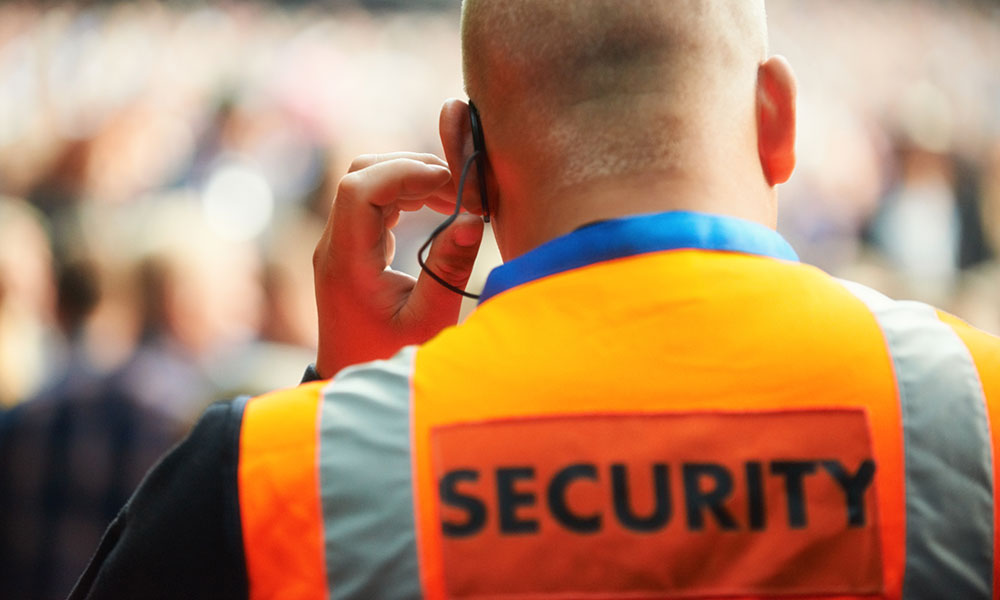
Las Vegas Shooting Underscores Need for Conference Security Strategy
Leaders in the meetings and exhibitions industry are working with federal law enforcement officials to help organizations develop plans to prepare for and, if necessary, respond to security threats at their events.
Editor’s Note: This article has been updated from the version that appears in the September/October issue of Associations Now, which was written before the October 1 mass shooting in Las Vegas.
Even before dozens were killed and hundreds injured when a gunman sprayed bullets over Las Vegas concertgoers October 1, associations in the meetings and exhibitions space were working with law enforcement authorities to develop plans for enhanced security at conferences and other meetings. The latest mass shooting at a “soft target” this week is lending new urgency to the effort.
“We live in a world that is much more dangerous, with a higher level of threat. We have to be more proactive,” says David DuBois, CMP, CTA, FASAE, CAE, president and CEO of the International Association of Exhibitions and Events (IAEE).
Success in this area is all about planning ahead of time. In some cases, that planning does not get done until someone experiences or knows of someone who experienced a disruptive event.
That’s why associations are devoting more attention to their safety and security strategy, and they seem to have “a greater awareness that things could happen,” says Bob Mellinger, founder and CEO of the business-continuity firm Attainium Corp.
For Meeting Professionals International Northern California Chapter, going through the process of assembling an emergency preparedness plan was eye-opening and empowering. “When we started examining the matter, it became evident where our gaps were, how exposed the association was in certain areas,” says Executive Director Lori Kinsey, CMP. But the effort generated “easy-to-understand steps to take in an emergency and other essential information about crisis management. And the conversations we had on the topic over many months were beneficial for all involved.”
Because convention centers and other traditional conference spaces could be considered “soft targets,” meeting planners, venue managers, and association leaders are taking a closer look at safety measures and working together to develop industrywide security guidelines.
Meeting Industry Takes the Lead
Recognizing the need to develop safety and security guidelines for convention centers and other venues, meeting industry leaders have been working with the U.S. Department of Homeland Security’s Support Anti-Terrorism by Fostering Effective Technologies (SAFETY) Act office. The SAFETY Act promotes antiterrorism technologies and practices, and it certifies convention centers and other buildings, in a process akin to LEED certification for sustainability, DuBois says.
Last year, the International Association of Venue Managers (IAVM), IAEE, and the Exhibition Services and Contractors Association (ESCA) joined forces and heightened their coordination with the SAFETY Act office to create the Exhibition and Meetings Safety and Security Initiative (EMSSI).
“These three associations came together to be the voice of the meetings and exhibitions industry,” says Brad Mayne, CFE, president and CEO of IAVM, which is leading the initiative through its foundation.
The group then formed the Industry Security Council as an extension of the EMSSI last fall. The council is working with Keyway Security Advisors to create industrywide security guidelines and develop a customized application template and web portal to aid convention centers in applying for the SAFETY Act certification.
The council includes 40 people who “represent the whole ecosystem of the exhibition and convention center business,” DuBois says. They have generated 85 to 90 guidelines, which the council and the IAVM legal team are reviewing before submitting to the SAFETY Act office.
Also built into the guidelines is a threat assessment tool that allows convention centers to work with meeting planners and show organizers a few months in advance to determine the potential threats that come along with their meetings.
For example, they might generate a list of 20 items and assign each a numerical value between 1 and 10 for threat level. “If you’re an 8 or a 9 because you have a prime minister or president or governor coming—or protesters—you need to evaluate all that and decide whether to bring in off-duty police officers or scan crates randomly,” DuBois says.
Safety Issues to Consider
As industry security guidelines move toward completion, associations will continue to host conferences, and security will remain a top priority. While a conference’s biggest vulnerabilities depend on numerous factors that are particular to each event, here are some considerations that are important across the board.
Communication. Mellinger says it’s important to focus on communication pathways. “Who do you need to communicate to? What can you or can you not control?” he says.
Planners also need to determine the key contacts at the venue. Although the salesperson may be the typical contact, planners should be in touch with the security department for security planning, Mellinger says, because they’re trained to handle disruptions.
Mayne echoes that sentiment. “Visiting with the venue’s security staff is very important,” he says. “They can help in setting up what the security protocol should be, and they have a lot of different resources to turn to.”
Mellinger adds that planners also need to figure out how to communicate with onsite staffers, attendees, and exhibitors, as well as staff back at headquarters; how to report an incident; and what message to send out.
“Don’t assume anything,” he says. “If you have a designated person to speak to the media, what if that person is disrupted? Do you have a backup?” Because of this, he recommends developing secondary and tertiary plans.
Physical security. There’s a vast array of physical security measures available. They may include scanning people at the “front of the house,” through metal detectors, as well as equipment and other items in the back of the house. “Think about all the crates and boxes and carts and everything that goes into a convention center through the loading dock when a show or meeting is moving in,” DuBois says.
Also, when registering attendees, let them know where their badge allows them to go. “Set up your perimeters to protect the infrastructure of the building,” Mayne says.
The people who come into the venue—other than your staff and attendees—are another concern. Do the food and beverage workers get badges and background checks? To hire skilled workers for an event, “you don’t just go to a temporary employee service company and start passing out badges,” DuBois says. “You have to have people who know what they’re doing, are safety and security trained, and have background checks.”
Beyond the venue. During the November 2015 Paris attacks, the perpetrators with bomb vests tried to get into the stadium but failed, so they detonated outside, and then others immediately went to the soft targets that were nearby.
“What we’ve learned as we’ve been working with security experts and the Department of Homeland Security is that most individuals who are going to make an attack on some place have scouted it in advance,” Mayne says. “They’re looking at how they can do the most harm. If they see that there’s a secure perimeter at a particular venue, they’re going to move to whatever’s closest to it.”
Convention centers, he notes, often are located right next to many other soft targets, such as nightclubs and shopping areas.
Cost. Enhanced security is expensive. “One of the elephants in the room is it costs money,” DuBois says. If setting up magnetometers costs an extra $10,000 or $20,000, that’s not the building’s responsibility—it falls to the association.
One idea is to charge attendees a small fee for enhanced security. “If I’m safer, and I have to go through a magnetometer, that’s the new reality,” he says. “No one’s not going to register for a meeting because of a $5 fee.”
Preparation Is Key
As with most new things, going about creating an emergency preparedness plan can seem overwhelming and difficult. That’s why it’s important to get started early.
“Success in this area is all about planning ahead of time,” Mellinger says. “In some cases, that planning does not get done until someone experiences or knows of someone who experienced a disruptive event.”
Planners should be asking the venue what potential disruptions they should be concerned about—hurricanes, blizzards, or other meetings taking place in the same city that might cause tension, for example.
“Yes, it takes time away from your primary job function,” Mellinger says. “But, on the flip side, if something happens, do you want to be the one who didn’t spend the time it took to have a plan?”
Creating a solid plan for the first time is the hardest part, and then you can keep refining it in the future. “At this point, there’s no excuse to not have some type of safety and security plan,” he says. “Start it, do it, train it, and make it better.”
(PeopleImages/Getty Images Plus)






Comments